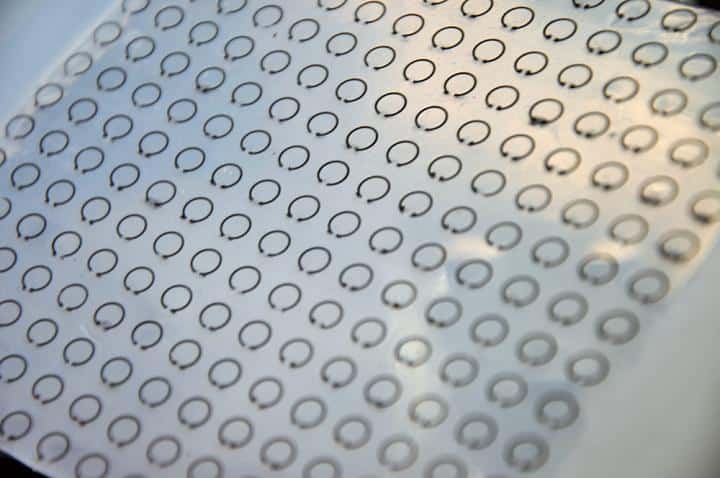Engineers from Iowa State University have developed a stretchable polymer material that uses tiny embedded rings of liquid metal to reduce the reflection of radar waves.
The cloaking device is formed of rows of split ring resonators filled with galinstan, a metal alloy that's liquid at room temperature but less toxic than mercury. These rings, which have a radius of 2.5mm and a thickness of 0.5mm , are embedded inside layers of silicone sheets. Together they create a resonator that can trap and suppress radar waves at a certain frequency.

"It is believed that the present meta-skin technology will find many applications in electromagnetic frequency tuning, shielding and scattering suppression," lead researchers Liang Dong and Jiming Song from Iowa’s department of electrical and computer engineering note in Scientific Reports.
Stretching the meta-skin changes the size of the liquid metal rings, which in turn changes the frequency that the device suppresses. This allows the cloaking device to be “tuned” to a variety of radar frequencies. In testing, radar suppression was about 75 per cent in the range of 8 to 10 gigahertz, with waves suppressed in all incident directions and observation angles. This is different from traditional stealth technologies that often only reduce the backscattering, or the power reflected back to the source of the radar.
While the researchers claim the meta-skin could be used on next-generation stealth aircraft, they also say the technology could be a stepping-stone towards more advanced systems, including invisibility cloaking.
"The long-term goal is to shrink the size of these devices," said Dong. "Then hopefully we can do this with higher-frequency electromagnetic waves such as visible or infrared light. While that would require advanced nanomanufacturing technologies and appropriate structural modifications, we think this study proves the concept of frequency tuning and broadening, and multidirectional wave suppression with skin-type metamaterials."




JLR teams with Allye Energy on portable battery storage
This illustrates the lengths required to operate electric vehicles in some circumstances. It is just as well few electric Range Rovers will go off...